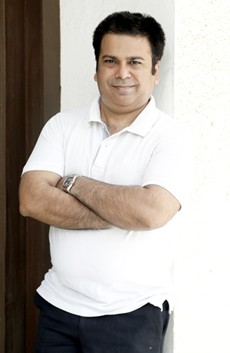Innovative marketing key to capturing India’s HNWIs
28 Sep 2015
 The Indian economy is currently 10th largest economy in the world. The economy has performed well after the global recession in 2008, with a GDP growth rate of more than 9 per cent in the last few years and a growth rate of 9.2 per cent in 2011, although that was subsequently reduced to 6.5 per cent in 2012 and growth slumped to decade low of 4.8 per cent in FY 2013.
The Indian economy is currently 10th largest economy in the world. The economy has performed well after the global recession in 2008, with a GDP growth rate of more than 9 per cent in the last few years and a growth rate of 9.2 per cent in 2011, although that was subsequently reduced to 6.5 per cent in 2012 and growth slumped to decade low of 4.8 per cent in FY 2013.
The present scenario looks much improved with the new government taking over at the centre in 2014.
Despite global recession and slowdown in the Indian economy, one consumer segment which is growing consistently is the super premium segment or High Net-Worth Individuals (HNWI).
HNWIs are defined as those having investible assets of $1 million or more excluding primary residence, collectables, consumables and consumer durables.
If we see the global trend, then Asia Pacific led the growth of HNWIs during the last three years. In 2012 Asia Pacific HNWI wealth grew 12.2 per cent to reach $12 trillion, while HNW1 population increased by 9.4 per cent to reach 3.68 million.
In India HNWI population has increased by 22.2 per cent to reach 1.53 million in 2012.
If we refer to the Forbes billionaire list, then India continues to hold its position in the global billionaire list with contribution of 55 billionaires accounting for total net-worth of $194 billion.
India's luxury market also grew at an impressive rate of 30 per cent in 2013 to reach $8.5 billion and it is expected to reach $14 billion by 2016.
The luxury segment in India mainly consists of apparel, accessories, home décor, pens, wines and spirits, jewellery, fine dining and automobiles to name a few.
Spending and investment pattern of HNWIs differ from country to country. For example Asia Pacific HNWIs are more focused on wealth preservation than growth in 2012.
At the same time Asia Pacific HNWIs allocated approximately 60 per cent of their portfolios to real estate, alternative investments and higher risk assets of equities. In India, HNWIs spend 30.2 per cent of the assets mainly in alternative assets (includes gold) as compared to similar spend of 10 per cent as per global HNWI investment trend.
Next generation of super premium customers are of diverse backgrounds such as senior corporate professionals, young working women, entrepreneurs, rich farmers to name a few.
Traditionally most of the super premium customers existed in the top eight cities in India, however the reach is now spreading to Tier 1 cities and includes rural rich farmers too.
Specific super premium segment in India includes film stars / TV stars / sports personalities, fashion designers, models, senior executives, expatriates, industrialist / businessmen / large retail format owners, exporters such as diamond merchants of Surat, brass exporters of Moradabad, marble merchants of Rajasthan, flower exporters of Tamil Nadu, coffee planters in Coorg and spice traders in Cochin to name a few.
Notable and distinguishing shopping trends of these set of consumers in India include increased usage of online/digital channels for regular search information and purchase, increased use of smart phones and purchase from high end retail.
To attract and tap the ever-increasing base of super premium segment in India, luxury retailers are adopting innovative strategies to bring these customers under their brand experience umbrella.
Luxury car makers in last few years have introduces entry level portfolios which seem more affordable than what it was some time back, with the result more Indians are using more luxury car brands than ever before.
Some of the organizations have created separate PRM for these set of customers sold through exclusive brand shopping channel or high end retail to effectively tap these customers.
There is no instant recipe to succeed in this market. However it is seen that brands who tap these segments in the evolutionary phase will benefit in the years to come. Most of the luxury brands in India are considering increasing the degree of localization, to overcome the challenges of higher lead time and high import duties and also increase their marketing spending on online channel and social media.
The Indian luxury market is bound to grow further, with large infrastructure investment in Tier I cities getting implemented in next few years, which will provide a ready platform for luxury retailers to penetrate in these markets.






























